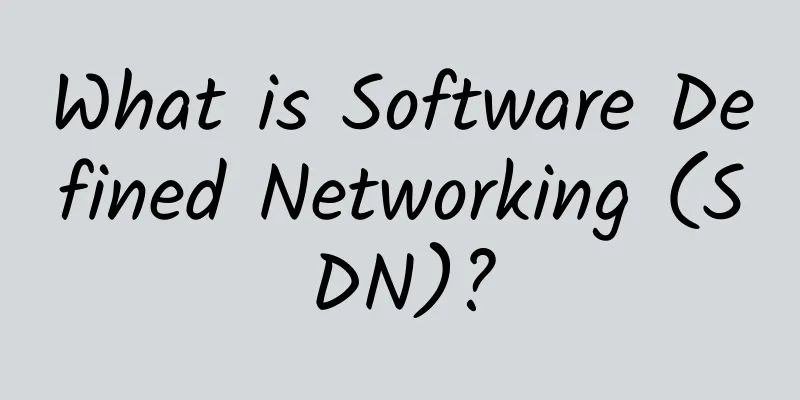The world's largest brain-like supercomputer is launched: it has millions of processor cores

|
Image: This UK supercomputer can operate like the human brain (Original title: This new supercomputer is now the world's fastest brain-mimicking machine) On November 6, according to foreign media reports, scientists recently activated the world's largest "brain": a supercomputer with 1 million processor cores and 1,200 interconnected circuit boards, which works in the same way as the human brain. Scientists announced that this is the world's largest neuromorphic computer, that is, a computer that simulates the discharge of neurons. The supercomputer, called the Spiking Neural Network Architecture (SpiNNaker), is based at the University of Manchester in the U.K. It "reimagines the way traditional computers work," project member Steve Furber, a professor of computer engineering at the university, said in a statement. But SpiNNaker does more than just “think” like a brain. It creates models of neurons in the human brain and simulates more neurons in action in real time than any other computer on Earth, according to the announcement. “Its main task is to support partial models of the brain: for example, models of the cortex, the basal ganglia, or multiple regions represented as networks of spiking neurons,” Furber said. More processors Ferber explained that SpiNNaker has been using 500,000 core processors to simulate neuronal activity since April 2016, but the upgraded machine has twice the capacity. With support from the European Union's Human Brain Project, SpiNNaker will continue to enable scientists to build detailed models of the brain. Now SpiNNaker has the ability to perform 200 trillion operations simultaneously, Ferber said in a statement. While some other computers may match SpiNNaker in terms of processor count, what makes this supercomputer unique is the infrastructure that connects those processors. In the human brain, 100 billion neurons fire simultaneously and send signals to thousands of target neurons. SpiNNaker's architecture supports ad hoc communication between processors, which behaves much like the brain's neural networks, Furber explained. “The connections of traditional supercomputers are not suitable for modeling the brain in real time,” he said. “I believe SpiNNaker can simulate larger neural networks in real time than any other machine.” Computer-based thinking simulation Before this, SpiNNaker could only run on 500,000 processors and model 80,000 neurons in the cerebral cortex. Another SpiNNaker simulation study of the basal ganglia, a brain region affected by Parkinson's disease, confirmed the potential of computers as a tool for studying brain diseases. SpiNNaker can also control a mobile robot called SpOmnibot, which uses a computer to interpret data from the robot's vision sensors and make navigation choices in real time, Furber said. So, with all its computing power and ability to simulate the brain, how close is SpiNNaker to a real human brain? Furber said that it is impossible to fully simulate the human brain at present. Advanced machines like SpiNNaker can still only handle a small part of the communication of the human brain, and supercomputers still have a long way to go before they can think independently. “Even with a million processors, and making a lot of simplifying assumptions, we’re only getting to 1 percent of the size of the human brain,” he said. However, Ferber added that because the mouse brain is 1,000 times smaller than the human brain, SpiNNaker can mimic the functions of the mouse brain. “If the idea of a mouse is just based on wiring up enough neurons in the right structure (which is controversial in itself), then the model we currently have running on SpiNNaker can get to that level,” Furber said. |
>>: Five packet sniffers that can replace Wireshark
Recommend
China Mobile Xiongyan Consulting Insights: 5G URLLC Key Technology Research Report
Labs Guide URLLC "Low Latency High Reliabili...
LOCVPS 10th Anniversary: Top up 1,000 yuan and get 100 yuan, 20% off for all items, Hong Kong VPS annual payment starts from 300 yuan
The established domestic merchant LOCVPS (Global ...
The difference between single-mode fiber and multi-mode fiber and how to choose
1. What are single-mode and multi-mode optical fi...
How to better migrate data centers
Migrating a data center is no small feat, and it ...
Super detailed! Introduction to Ethernet switch security features
Today I will talk to you about the security funct...
5G will catalyze the era of large-scale innovation in the whole society
Intuitively, 5G has a very obvious role in drivin...
RAKsmart Hong Kong VPS simple test, three network direct connection/Telecom CN2
A few days ago, we shared information about RAKsm...
IoT Networks for 5G Massive Machine Type Communications (MMTC)
The concept of Internet of Things (IoT) is becomi...
WiFi 6 is not suitable for individual users yet
5G has become a household name, but its new WiFi ...
China leads in 6G patent applications, satellite communication technology attracts attention
On April 26, the Intellectual Property Developmen...
Let's talk about 11 main neural network structures
With the rapid development of deep learning, a wh...
Let's talk about the time-consuming TCP connection
When developing daily interfaces on the Internet ...
A Brief Analysis of Bluetooth MESH Broadcasting
Labs Guide Bluetooth mesh technology is implement...
IT Asset Management System - ForceView ITAM
Introduction ForceView ITAM (IT Asset Management)...
A brief discussion on the prospects for the evolution of 5G core network
I recently read a paper about 5G core network, &q...









